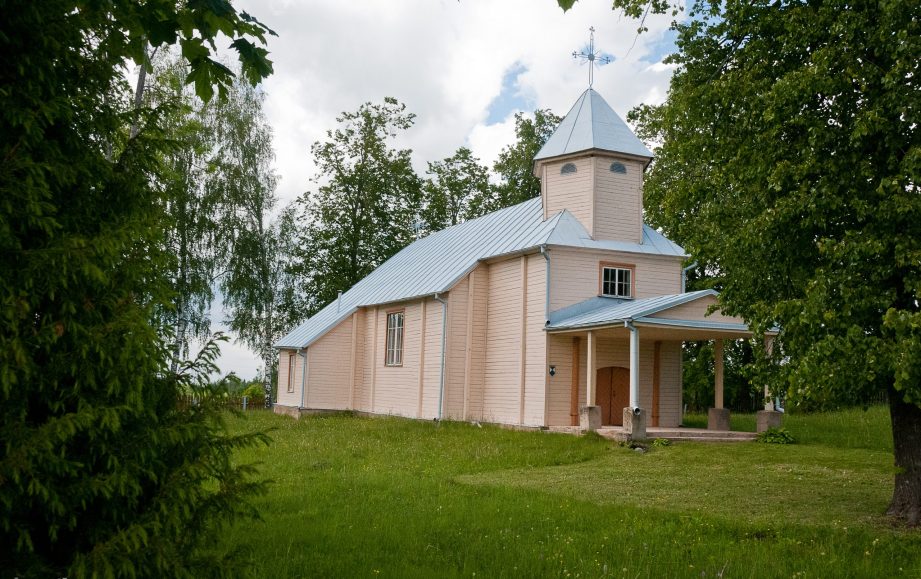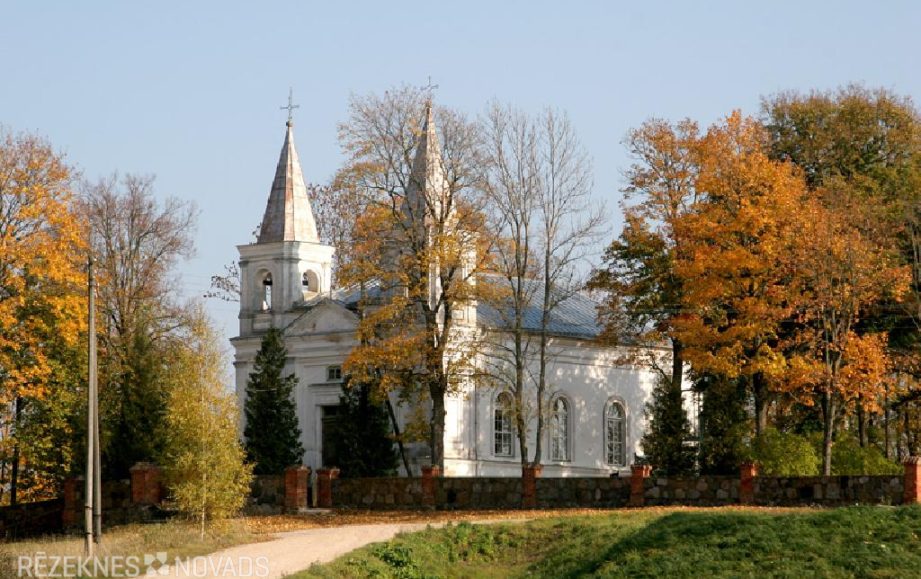Viewing objects and historical persons
Puzzine can be proud of the Roman Catholic Church of 1670, a school building built in Ulmanis, which now houses a branch of the old people of Rezekne, the distinguished Latgale book publisher V. Litch. There is a cradle, too, for the respected Cordirigent, Stanislav Brok. The Private Manor, a school where the archive of the Manteiferous Family Documents has been stored, is being restored by a private self-owner. Near Rubuu and Zuiu's ancient tomb, Sherjan – Dricānu at the edge of the highway, is asked by Professor Boļeslav Brezhgo's memorial stone giant.
Shaves - the Brucan area during the First Free State was the end of the luthericious rich family. Now parish bread positions, hopefully, will be renewed with a German private operator 300 ha of bush-dependent soil. There is Professor Valfred and Manfred Schnep, Professor Amanda's pot, Professor Skaidrice Lasmane's home, and there is a basketball player Edgar Shane's roots.
Finally, 20 km from Rezekne, Dricāni, whose name originates in two word variants – drives (buckwheat) and drying (trickling). In the old centre, the mountains of the Catholic Church of 1859, with Baron Manteiferous Places in the garden of the church, and the other hill every morning of the morning, were celebrated by the 1 TP7T high school building built in 1953. In the courtyard of the old People's House, there was a memorial stone for the victims of all the occupations, the old parish house, and then over the Gulbenes, and the Rēzekne highway, looked at THE new part OF THE Dricānu centre. There is a cultural house that hosts self-acting collectors, who have been led by a respected conductor and composer Anton Matveyan, who is now in his life. The parish council and a total of two-storey houses, kindergartens, two feldsher points, Dricans and Pilcene. A little farther down TO Sakstagala, in the Saukavīšu of Saucaves, in April 1945, the commemoration of the memorial place in Belgium, then within 3 km from the Kakarvich castle. In Aasinova - the book publisher, the three-star Order of the three-star Order, the native side of John Elder, in Cousmos - Latgale First Awaken Employee, the agronomer Joseph Kindzuu's house in the yard now has his dreams in the Latvian sherry-polished musician Andris Eriņš. In the valley of Sexdzana Lake, the groves in the groves are listening to the homes of the eagle family, but the most famous of its offerings, the laureate of several international competitions, the Eveta Vilumai - Apkalna applaud the entire world …
The beauty is Dricānu hitched hills, the spine of the Little River in the River of Mazch, the San kamenes and the small birds are haunted by the hunting of the larvae, but THERE is a Dricānu man in the middle of the beauty of all the natural beauty, both the famous and the tough palicator of the metallic cities of Latvia. As a small urga, they from Kaupečius, Cedars, Dzeņagola, Vacainakim, Rudzushimim, Susekli, Viershukolna, Raibis, Apiniam, Pizikim, Smudad, Smilojim, Dwarem, Shpunim, Mortugim, Trimaille, and other places in the streaming of the single Dricānu. And that word already has a latgalic force and an eternal stay in God's lists …
Castle St. Anton Roman Catholic Church
 The castle tree was built, originally as a grave chapel, to the Holy Anton. The time of construction varies from one source to another: 1670 and 1762. The church's wooden beds were built by local masters, without the help of saw, using the axe and the scraps of the dyed logs with the iron nails of the local blacksmith. In later years, the outer walls of the building were embroidered with planks. The roof is covered with black tin. Above the church's entrance is a small hexagonal tower with half-circular windows and a bulb-shaped dome above which, like a cross-pressed cross, and a 10-pound bell is in the tower. The church is also dedicated to half-columns. The church area is 146 m2. In the 1970 s, the Soviet authorities wanted to disassemble this colorful building, which failed, thanks to the landlord and the cultural worker William Lacim.
The castle tree was built, originally as a grave chapel, to the Holy Anton. The time of construction varies from one source to another: 1670 and 1762. The church's wooden beds were built by local masters, without the help of saw, using the axe and the scraps of the dyed logs with the iron nails of the local blacksmith. In later years, the outer walls of the building were embroidered with planks. The roof is covered with black tin. Above the church's entrance is a small hexagonal tower with half-circular windows and a bulb-shaped dome above which, like a cross-pressed cross, and a 10-pound bell is in the tower. The church is also dedicated to half-columns. The church area is 146 m2. In the 1970 s, the Soviet authorities wanted to disassemble this colorful building, which failed, thanks to the landlord and the cultural worker William Lacim.
The local craftsmen of the daddy log were lined with iron nails of local hills, and the centuries were toothed. In ancient articles, the Castle Catholic Church was marked as a Dricānu branch church. The church was swelled by Sv. On behalf of Anton, and one of the altar is dedicated to the Holy. The big altar painting shows the Pester at the cross. The church is an altar painting from 18.gs., which is a cultural monument of national significance.
Roman Catholic Church of the Holy Apostles Simeon and Judas in Dricāni
 The first Dricānu Roman Catholic Church was built in 1779. It was a wooden church that served 80 years. The current church church was built in 1859 on Baroness Manteifeles and Catherine Uljanovsk. The church with the permission of Mogilev metropolitan was consecrated by the local deputy K. Tarvids in October 1859, drawing the honour of the apostles Simon and Judah.
The first Dricānu Roman Catholic Church was built in 1779. It was a wooden church that served 80 years. The current church church was built in 1859 on Baroness Manteifeles and Catherine Uljanovsk. The church with the permission of Mogilev metropolitan was consecrated by the local deputy K. Tarvids in October 1859, drawing the honour of the apostles Simon and Judah.
Two 19 th-century cockpit crucifixes are located in the church, three altar with rich cockpits in the gothic style. The central altar contains the painting of the Holy Jesus's heart, and the wooden tabs “St. Peter and Paul”, above the painting shows Simon-Judah's subsoil, or a bas-relief named church. In addition to the main altar, there are 19 th century round sculptures showing apostles. The right-hand altar is dedicated to the sending of the Holy Spirit, a tab. of the 19 th century, representing the arrival of the Holy spirit in the Summer Festival. In the middle of the left altar is the sculpture of the Virgin Mary, the St Anton and the Holy Therese from Lizier's image, alongside the altar is the sculpture of Saint Joseph.